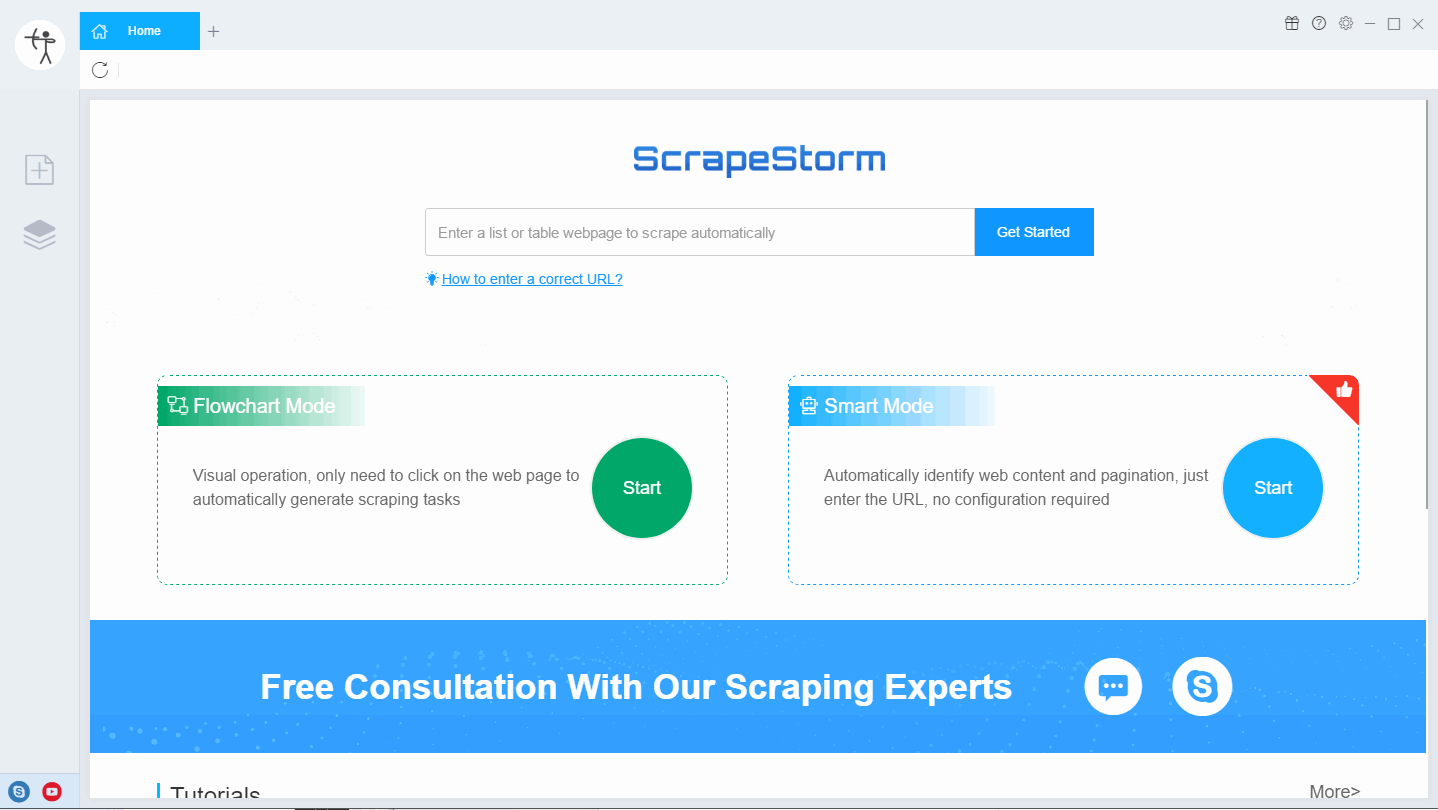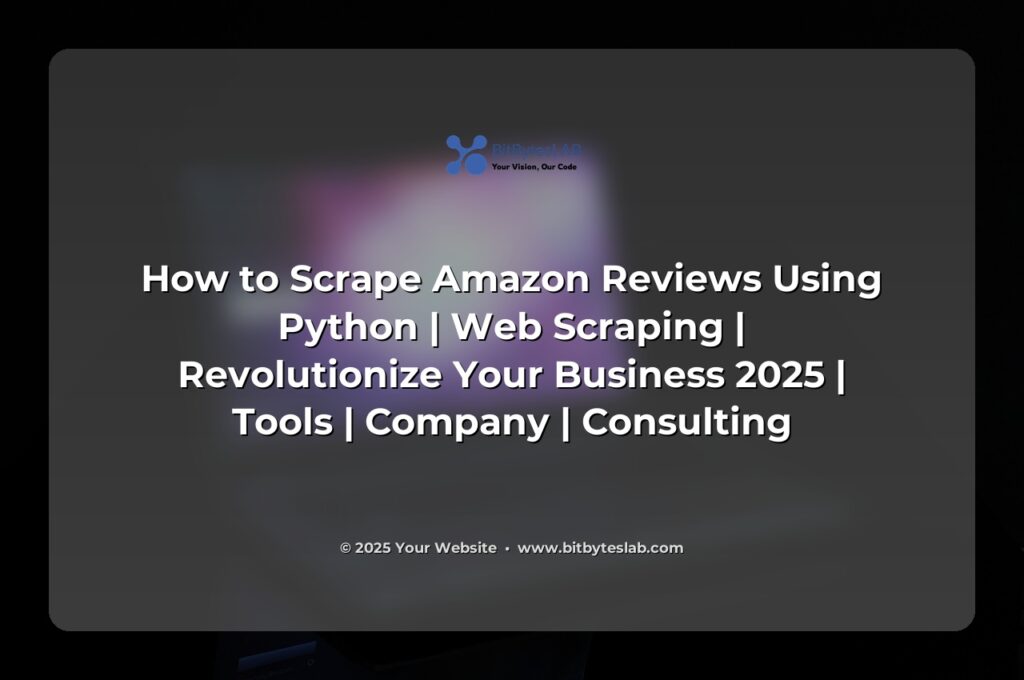Revolutionize Your Business in 2025: Scrape Amazon Reviews with Insight, Not Just Data
Picture this: you’re a brand strategist, and the competitive edge boils down to understanding what customers truly feel about your product on the world’s largest marketplace. Amazon reviews hold that gold. In 2025, owning a clean, ethically‑sourced, and actionable review dataset can shift product launches from guesswork to data‑driven mastery. Let’s dive into the strategic mindset that turns raw comments into ROI.
Problem Identification and Context
Amazon’s terms of service are clear: automated scraping is a no‑no. Yet, the competitive pressure is immense—companies report a 12% bump in conversion rates when they use real‑time sentiment insights. The challenge? Balancing the legal gray area, technical hurdles, and the sheer volume of reviews that can easily reach the millions for a top‑selling product. The result? Teams waste hours on brittle scripts that break with every UI tweak, or worse, risk IP bans that close a data pipeline permanently.
Core Concepts and Methodologies
Success starts with a framework that treats reviews as structured data assets, not just free‑form text. Think of six pillars:
- Legal Backbone: Use the Amazon Product Advertising API or the public customer‑review dataset on AWS for research‑grade data.
- Robust Architecture: Design a pipeline that decouples crawling, parsing, enrichment, and storage—so a hiccup in one layer doesn’t bring the whole stack down.
- Rate‑Aware Crawling: Embed adaptive throttling (1–3 s between requests), jitter, and exponential back‑off. Monitor 429 responses and auto‑rotate proxies.
- Dynamic Content Handling: When reviews load via AJAX, lean on lightweight headless browsers with stealth features; but default to pure HTTP requests whenever possible.
- Schema Discipline: Define a review schema (id, rating, title, body, date, verified flag, helpful votes) and validate every row with a schema library. This turns messy JSON into clean, query‑ready tables.
- Observability: Log request latency, error rates, proxy health, and data quality metrics. A simple Prometheus + Grafana stack keeps you in the loop.
By anchoring your scraper in these pillars, you build resilience against site updates, traffic spikes, and compliance challenges.
🚀 Why did the developer go broke? Because he used up all his cache! 💸

Expert Strategies and Approaches
When you’re scraping at scale, think “data as a service.” Batch your requests—pull 100 pages at a time, keep a rolling window of unique reviewers, and deduplicate by ID. Leverage machine learning to enrich reviews with sentiment scores, language tags, and entity extraction. Use a lightweight feature flag to toggle between plain text and enriched outputs, so you can roll back if a new model introduces bias.
Quality over quantity wins. Build validation pipelines that flag anomalous ratings, bot‑like patterns, or sudden spikes in helpful votes. Combine this with continuous monitoring of proxy health and user‑agent rotation, and you’ll keep your scraper invisible to Amazon’s radar.
Industry Insights and Trends
The data‑driven e‑commerce landscape is evolving fast. In 2024, 68% of leading brands reported that real‑time review analytics helped them shorten product launch cycles by 15%. AI‑powered summarization can reduce thousands of words into executive dashboards in seconds, enabling C‑suite decisions that were once minutes away.
Another trend: multilingual review mining. With global marketplaces, ignoring non‑English feedback can cost you £2.3 M in missed sales per product. Deploying language detection and translation pipelines ensures you’re not missing hidden gold.
Finally, the regulatory environment is tightening. The EU’s Digital Services Act will require companies to disclose how they use scraped data. Build your pipeline with audit trails—record where each review came from, when it was ingested, and the transformations applied.
🌐 Why did the web developer leave the restaurant? Because of the table layout! 🍽️

Business Applications and ROI
What does this translate into for your bottom line? Here are three real‑world applications:
- Product Development: Extract recurring pain points to prioritize feature backlog. Companies who iterate on customer feedback see a 22% faster time‑to‑market.
- Pricing Strategy: Correlate sentiment spikes with price changes—spot the sweet spot where consumers are most receptive.
- Marketing Campaigns: Spot high‑impact influencers in review data and partner for authentic storytelling. Authentic reviews can boost ad CTR by 18%.
When you quantify these outcomes, the payback period for a robust review‑analytics stack shrinks to under six months for most mid‑market brands.
Common Challenges and Expert Solutions
Even with a solid framework, you’ll hit roadblocks:
- CAPTCHA & Cloudflare: Use rotating residential proxies and stealth headless browsers. If you hit a stalemate, switch to the AWS public review dataset.
- Dynamic Content: Prefer lightweight AJAX endpoints when available; otherwise, fetch the page once with a browser, extract the JSON payload, and discard the rendering overhead.
- Data Quality Drift: Automate schema checks. When selectors change, the pipeline throws an alert, not silent failures.
- Legal Compliance: Maintain a log of source, permissions, and usage limits. This audit trail satisfies GDPR and upcoming digital content regulations.Scalability Limits: Decouple ingestion from analysis. Store raw HTML snapshots in an object store, then process asynchronously with a micro‑service architecture.
Remember, the key is to build resilience into every layer, so a single point of failure doesn’t cascade.
Future Trends and Opportunities
Looking ahead, two game‑changing developments loom:
- AI‑Driven Data Governance: Models that automatically flag disallowed content, deduplicate across sites, and assign provenance labels will become standard. Invest in these tools early to future‑proof your pipeline.
- Graph‑Based Recommendation Engines: By mapping reviews to a knowledge graph, you can surface hidden product relationships—perfect for cross‑sell and upsell strategies.
Embrace these trends, and your scraper will evolve from a mechanical tool into a strategic asset that powers innovation, customer trust, and growth.
Conclusion
Scraping Amazon reviews isn’t just about pulling text; it’s about architecting a trustworthy, scalable, and legally compliant intelligence engine. By grounding your approach in solid concepts, employing expert strategies, and staying ahead of regulatory and technological shifts, you can unlock insights that translate directly into higher conversion rates, smarter product decisions, and a competitive moat.
Ready to turn review data into your next growth lever? BitBytesLab specializes in web and data scraping services that fuse technical excellence with ethical rigor. Let us help you build the next generation of data‑driven success.

